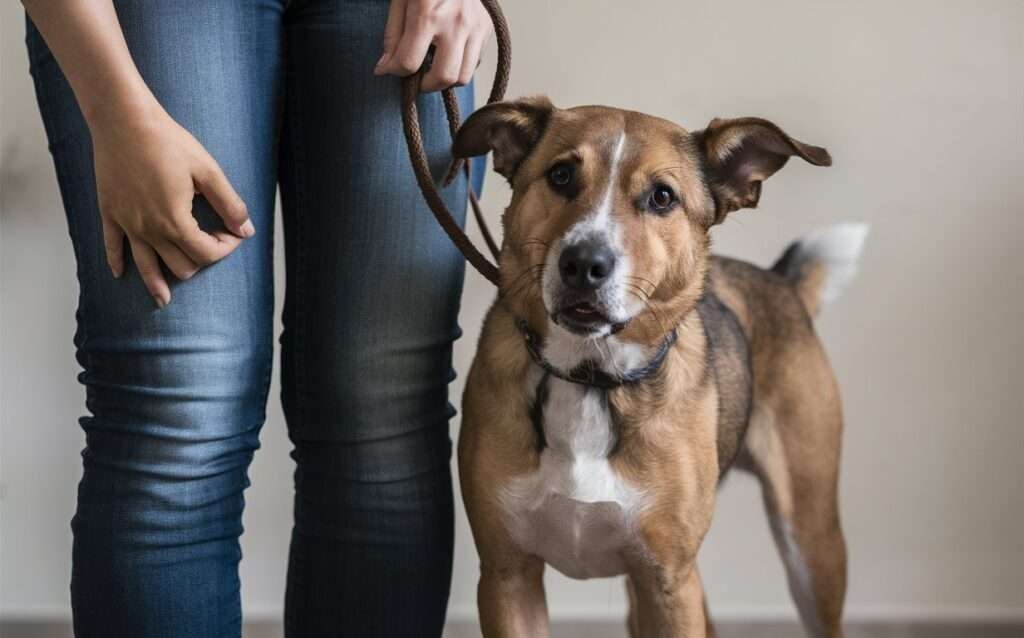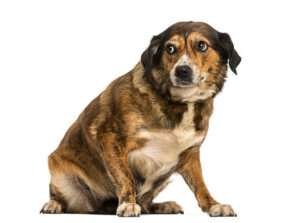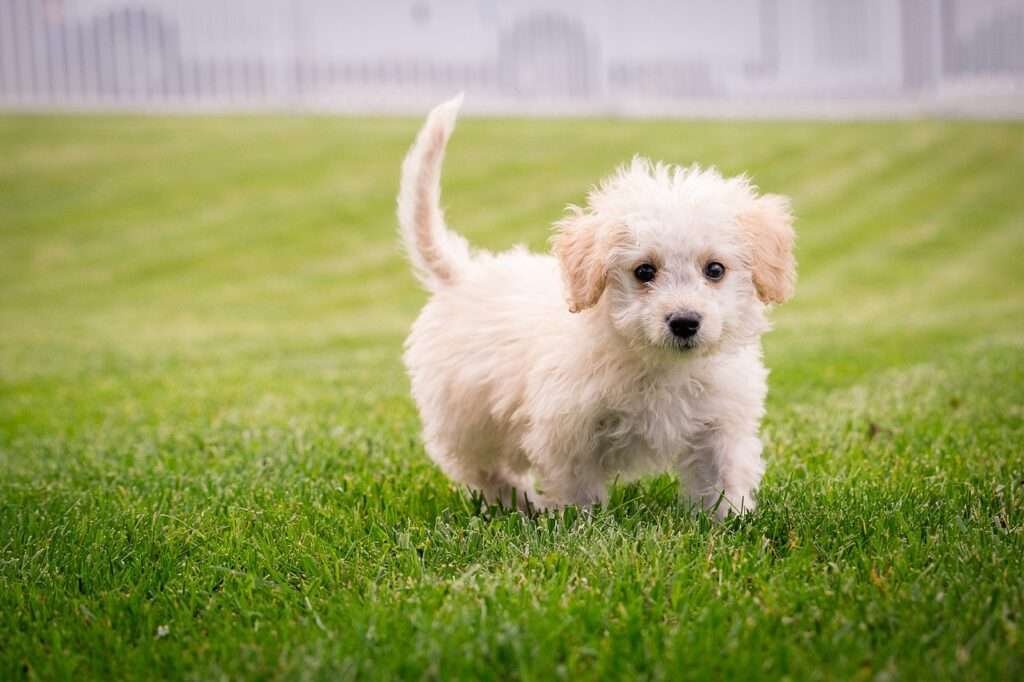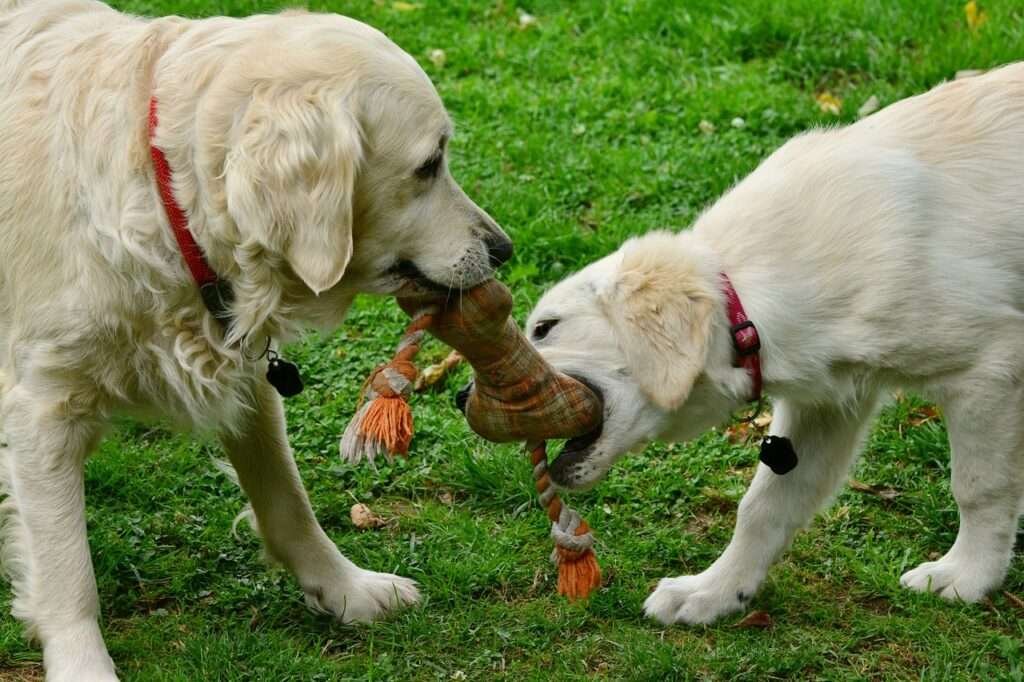Dogs show how they feel through their actions, but it’s not always easy to understand what they are trying to tell us. Sometimes, a dog might act out because it feels insecure or aggressive. Knowing the difference between these two feelings is important for keeping your dog and others safe. This guide will help you recognize the signs of insecurity and aggression in dogs and explain what you can do in each situation, using the simplest words.
Table of Contents
ToggleWhat Does It Mean If a Dog Is Insecure?
A dog’s insecurity means it feels fearful or unsure. An insecure dog may not feel safe or confident around people or other animals. This can cause the dog to act in ways that may seem strange or alarming to its owner.
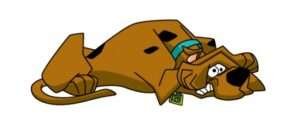
Common Signs of an Insecure Dog
-
- Hiding or Crouching: An insecure dog may try to hide or crouch when scared. This is the dog’s way of avoiding anything that makes it uncomfortable.
-
- Shaking: A dog that shakes or trembles is often feeling very anxious or afraid.
-
- Barking or Whining Too Much: Dogs that are insecure might bark or whine a lot to show they are scared or uncomfortable. This is their way of asking for comfort or letting you know something is wrong.
-
- Avoiding Eye Contact: Insecure dogs often don’t look people in the eye. They may turn their head or look down because they don’t feel confident.
-
- Dragging Their Tail: If a dog tucks its tail between its legs, it’s a sign that it feels scared or insecure. Tail position can tell you a lot about a dog’s feelings.
insecurness could be THE reason of AGGRESSION.
Aggression in dogs is when they show angry or violent behavior towards others. This can be towards people, other animals, or even things. Aggression usually happens because the dog feels threatened and wants to protect itself or its space. It’s important to know that sometimes aggression comes from fear or insecurity, but it shows up more dangerously.
Common Signs of Aggressive Dogs
-
- Howling: A dog howling may be telling others to stay away. This is one of the first signs of aggression and should not be ignored.
-
- Biting or Snapping: If a dog bites or snaps at someone, it is behaving aggressively. This is a strong sign that the dog feels threatened and is trying to defend itself.
-
- Showing Teeth: When a dog shows its teeth, it gives a warning that it may bite. This is a serious sign of aggression.
-
- Stiff Body: An aggressive dog is often very still and tense. This means the dog is ready to fight if it has to.
-
- Staring: Unlike insecure dogs, aggressive dogs may stare directly at people or things they see as a threat. This means they are not retreating.
How to Tell If a Dog Is Insecure or Aggressive
It can be hard to know if a dog is insecure or aggressive because the signs can sometimes look similar. However, there are some key differences in how the dog acts and reacts to what’s happening around them.
Watch the Dog’s Body: Insecure dogs often make themselves look smaller by hiding or crouching, while aggressive dogs make themselves look bigger by standing tall and stiff.
Think About What’s Happening: If a dog is in a new or scary place, it might shake or hide because it feels insecure. If a dog feels trapped or in danger, it might growl or bite to protect itself.
Look at the Dog’s Eyes: Insecure dogs often look away or down, while aggressive dogs might stare directly at what they see as a threat.
Notice How the Dog Acts Around People: An insecure dog might shy away from new people or places, while an aggressive dog might bark or growl at strangers.

How to Help an Insecure Dog
If you think your dog is insecure, there are things you can do to help them feel more safe and confident.
Create a Safe Space: Give your dog a quiet place in the house where they can go if they feel scared. This could be a cozy spot with their bed and toys.
Use Rewards: When your dog behaves in a calm and confident way, reward them with treats, praise, or petting. This helps them feel good about the situation.
Go Slow: Don’t push your dog into situations that make them uncomfortable. Let them take their time getting used to new places or people.
Ask for Help: If your dog’s insecurity is very strong, it might be a good idea to talk to a dog trainer who can give you expert advice.
How to Handle an Aggressive Dog
Dealing with an aggressive dog needs careful handling to keep everyone safe.
Stay Calm: If your dog starts acting aggressively, stay calm and don’t make any sudden moves that could make things worse.
Don’t Punish: Punishing an aggressive dog can make the problem worse by making them more scared or anxious. Instead, try to understand what is causing the aggression and work on that.
Distract Them: If you see your dog becoming aggressive, try distracting them with toys or treats. This can help take their focus away from what is making them aggressive.
Get Professional Help: Dog aggression can be complex, so it may be best to work with a professional trainer who can help you manage and reduce this behavior.
How to Overcome Insecurity and Aggression
The best way to prevent insecurity and aggression in dogs is to understand their needs and provide them with a loving, stable environment.
1. Socialization: Let your dog meet different people, go to new places and experience different things from a young age. This helps them become more comfortable and less likely to become fearful or aggressive later.
2. Training: Teaching your dog basic commands can help them feel more secure and confident. This shows them that you are in charge, which can ease their insecurities.
3. Have a routine: Dogs feel safer when they know what to expect. Try to keep a regular schedule for feeding, walking and playing.
4. Exercise: Make sure your dog gets enough physical activity. A tired dog is less likely to have problems with aggression because they have less energy to work with.
Conclusion
Understanding whether your dog is feeling insecure or aggressive is key to their well-being. By paying attention to how they act and their body language, you can get a good idea of their emotions. If your dog seems unsure or nervous, there are plenty of ways to boost their confidence and make them feel safer. On the other hand, if your dog shows aggressive behavior, staying calm and seeking help from a professional can really help. With a bit of patience and care, you can make a big difference in your dog’s happiness and help them live a more joyful life.
Frequently Asked Questions
How can I tell if my dog is feeling unsafe?
Your dog may hide, shake, avoid eye contact, or tuck its tail.
What does an aggressive dog look like?
An aggressive dog may growl, bare its teeth, bite, or glare.
Can an insecure dog become aggressive?
Yes, an insecure dog can behave aggressively if it feels threatened.
What should I do if my dog is aggressive?
Stay calm, avoid punishment, and try to redirect their attention with a toy or treat.
How can I help my dog feel better around new people?
Let them come at their own pace and reward calm behavior.
Is it right to punish aggressive dogs?
No, punishment can make the dog more fearful and make the behavior worse.
How can I boost my insecure dog’s confidence?
Create a safe environment, use treats and praise, and don’t force them into scary situations.
Why might a dog behave aggressively?
Aggression can come from fear, feeling threatened, or protecting its space.
How can I stop my dog from being insecure?
Socialize your dog early, train consistently, and keep a steady routine.
When should I get help for my dog’s aggression?
Get help if the aggression is severe, happens frequently, or if you’re not sure how to handle it.

